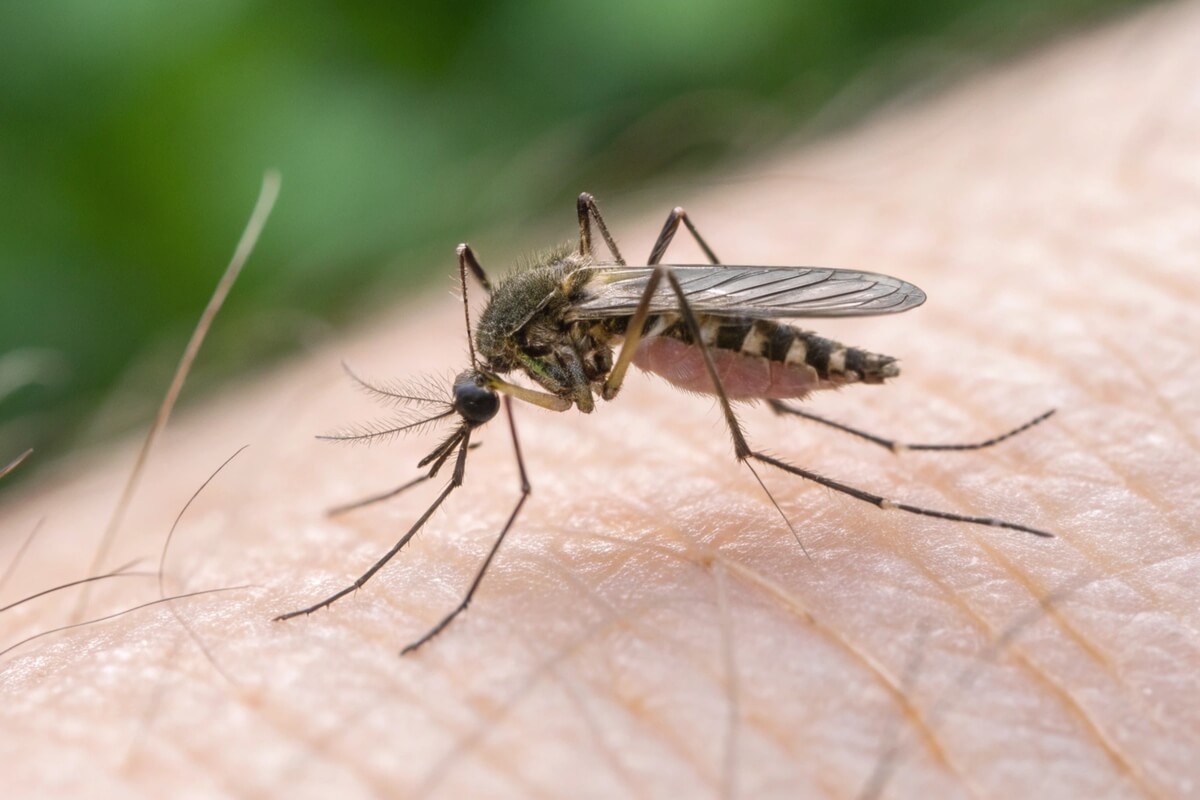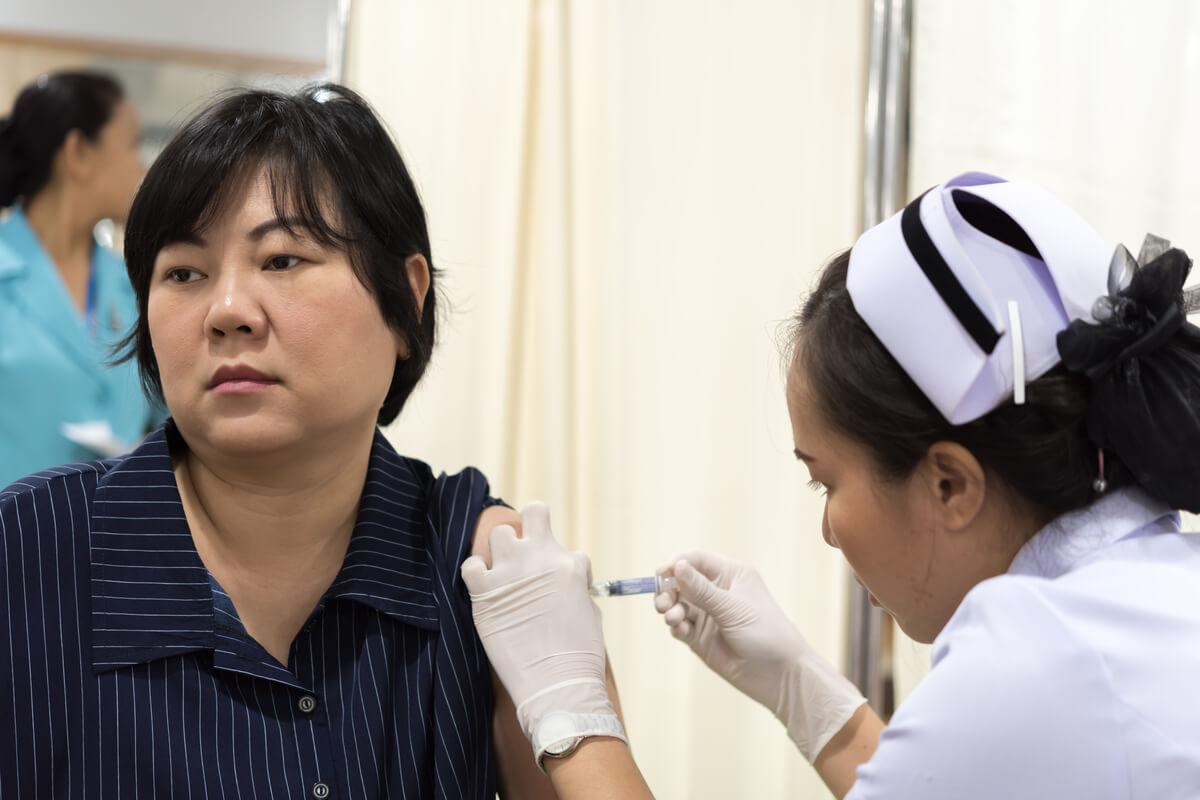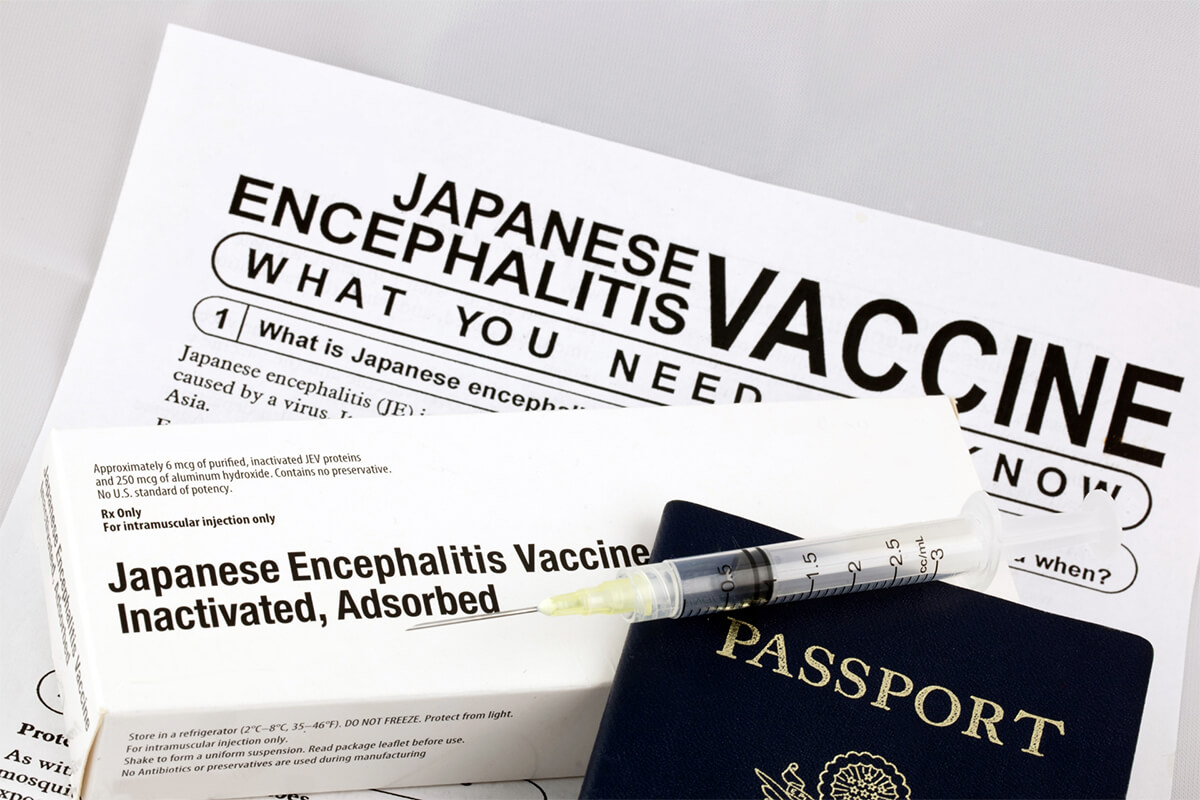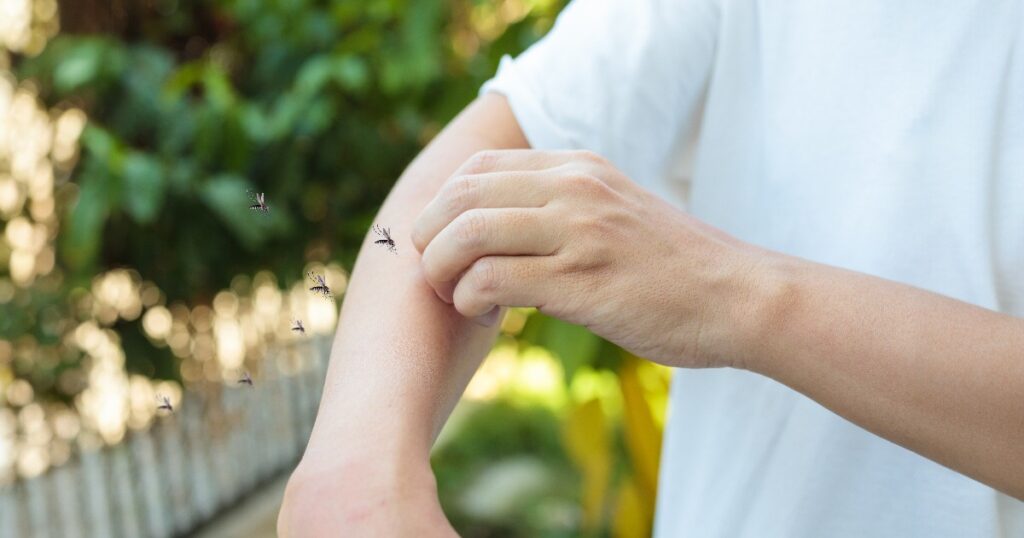Key Takeaways
- Japanese encephalitis spreads through infected mosquito bites in parts of Asia and the western Pacific.
- Risk depends on travel duration, location, activities, and season.
- Vaccination and mosquito precautions provide effective protection for at-risk travelers.
Planning a trip to Asia or the western Pacific means preparing for more than just the sights and cuisine. Among the health considerations, Japanese encephalitis (JE) deserves your attention. This mosquito-borne viral infection is rare for most travelers but can cause severe brain inflammation in the few who become ill. Understanding your personal risk, recognizing early symptoms, and knowing how vaccination protects you can make a major difference in staying safe abroad.
You face the highest risk if you spend extended time outdoors in rural or agricultural areas, especially during or after the rainy season when mosquitoes thrive. Short-term visits to urban centers carry minimal danger, but even brief exposure in high-risk zones can lead to infection. Symptoms often start with fever and headache before progressing to confusion, seizures, or paralysis in severe cases.
Vaccination and mosquito bite prevention remain your best defenses. The inactivated JE vaccine, available in many countries, offers strong protection for travelers spending a month or more in endemic regions or those with uncertain itineraries. Taking simple steps—using insect repellent, wearing long sleeves, and sleeping under nets—adds another layer of safety.
Contents
1. Japanese Encephalitis Overview
2. Geographic Distribution and Transmission
- Endemic Regions: Southeast Asia and Western Pacific
- Transmission Cycle and Mosquito Vectors
- Transmission Season and Risk Periods
4. Symptoms and Clinical Presentation
- Incubation Period and Early Symptoms
- Severe Neurological Complications
- Long-Term Effects and Outcomes

Vaccination Program
Explore our range of vaccination programs designed for your specific health needs.
Japanese Encephalitis Overview
Japanese encephalitis (JE) is a mosquito-borne viral disease that can cause inflammation of the brain. You face the highest risk in rural parts of Asia and the western Pacific, particularly during or after rainy seasons when mosquito activity peaks. Vaccination and mosquito bite prevention remain the most effective protective measures.

What Is Japanese Encephalitis
Japanese encephalitis is caused by the Japanese encephalitis virus (JEV), a flavivirus related to dengue, West Nile, and yellow fever viruses. It spreads to humans through the bite of infected Culex mosquitoes, mainly Culex tritaeniorhynchus.
Most infected people show no symptoms or experience only mild fever and headache. In rare cases, the infection leads to encephalitis, or brain inflammation, which can cause confusion, seizures, or coma. The fatality rate among severe cases is about 20–30%, and survivors may experience long-term neurological effects.
You can lower your risk by using insect repellent, sleeping under treated bed nets, and considering vaccination if traveling to endemic areas. The vaccine provides strong protection and is recommended for long-term travelers or those spending time outdoors in rural regions.
Japanese Encephalitis Virus Lifecycle
The Japanese encephalitis virus circulates in a cycle involving mosquitoes, pigs, and wading birds. Pigs act as amplifying hosts, where the virus multiplies, while birds help spread it geographically. Humans and other mammals are considered dead-end hosts because they do not produce enough virus in their blood to continue transmission.
Mosquitoes become infected after feeding on an infected animal. The virus replicates inside the mosquito and later passes to humans through bites. Transmission occurs most often in warm, humid environments where Culex mosquitoes breed in rice paddies or standing water.
Understanding this cycle helps you take targeted precautions, such as avoiding mosquito exposure near livestock areas and using environmental controls to reduce breeding sites.
History and Global Impact
Japanese encephalitis was first identified in Japan in the 1930s and remains the leading cause of vaccine-preventable viral encephalitis in Asia. It is now endemic in more than 20 countries, including India, China, Vietnam, and parts of Indonesia and Papua New Guinea.
Widespread vaccination programs have sharply reduced cases in some nations, but the virus still causes thousands of severe infections each year. Travelers visiting rural or agricultural areas during transmission seasons remain at risk.
Public health agencies, including the World Health Organization (WHO) and Centers for Disease Control and Prevention (CDC), continue to monitor outbreaks and promote vaccination to limit global impact.
Geographic Distribution and Transmission
Japanese encephalitis virus (JEV) circulates mainly in tropical and subtropical regions where Culex mosquitoes thrive. You face the greatest risk in areas with rice cultivation, pig farming, and seasonal rainfall that support mosquito breeding and virus transmission.

Endemic Regions: Southeast Asia and Western Pacific
You can encounter Japanese encephalitis across 24 countries in the Southeast Asia and Western Pacific regions. Countries with ongoing transmission include India, Nepal, Thailand, Vietnam, Cambodia, Indonesia, the Philippines, China, Japan, and Papua New Guinea.
In these regions, more than 3 billion people live where JEV is endemic. Most reported cases occur in rural or peri-urban areas where people live close to pigs and wading birds, which serve as virus reservoirs.
While Japanese encephalitis primarily affects children in endemic countries, unvaccinated travelers of any age remain at risk. Even short stays in rural areas during the transmission season can lead to exposure. Urban centers usually pose a much lower risk, though sporadic cases may still appear near agricultural zones.
| Region: Southeast Asia | |
|---|---|
| Examples of Endemic Countries | India, Nepal, Thailand, Vietnam, Cambodia |
| Estimated Population at Risk | >2 billion |
| Region: Western Pacific | |
|---|---|
| Examples of Endemic Countries | China, Japan, Philippines, Papua New Guinea |
| Estimated Population at Risk | >1 billion |
Transmission Cycle and Mosquito Vectors
You become exposed through the bite of infected female Culex mosquitoes, mainly Culex tritaeniorhynchus. These mosquitoes feed at night, both indoors and outdoors. They breed in flooded rice fields, ponds, and irrigation systems—common in rural Asia.
The virus maintains a natural cycle between mosquitoes, pigs, and water birds. Pigs act as amplifying hosts, producing high levels of virus in their blood that infect more mosquitoes. Birds, especially herons and egrets, help spread the virus geographically.
Humans are dead-end hosts, meaning you cannot pass the virus to mosquitoes or other people. This limits direct human-to-human transmission but underscores the importance of controlling mosquito exposure and maintaining vaccination coverage.
Transmission Season and Risk Periods
Your risk rises sharply during the rainy and harvest seasons, when mosquito populations peak. In temperate regions like northern China, Japan, and Korea, transmission mainly occurs from May to October. In tropical and subtropical areas, such as Indonesia and southern Vietnam, it can occur year-round, with spikes during monsoon months.
Travelers spending extended time outdoors, especially near rice paddies or pig farms, face higher exposure. Even short nighttime activities without mosquito protection can increase risk.
To reduce your chance of infection, use repellents, wear long-sleeved clothing, and sleep under insecticide-treated nets. Vaccination remains the most effective preventive measure for those visiting or living in endemic zones during active transmission periods.
Traveler’s Risk Factors
Your risk of Japanese encephalitis (JE) depends on where and how you travel. The likelihood of infection increases with exposure to mosquito bites in areas where the virus circulates, especially during the local transmission season. Duration of stay, travel purpose, and type of accommodation also influence your level of risk.

Who Is Most at Risk
You face the greatest risk if you spend extended periods in rural or agricultural areas of Asia or the western Pacific where JE virus circulates. People moving to endemic regions, long-term travelers (one month or more), and frequent visitors to these areas are strongly advised to consider vaccination.
Children and unvaccinated adults are especially vulnerable because they lack natural immunity. Even short-term travelers may be at risk if they engage in outdoor or nighttime activities during peak mosquito activity.
Healthcare and military workers stationed in endemic areas also face higher exposure, particularly when staying in basic housing without screened windows or air conditioning. The threat remains low for most short-term tourists, but the severe outcomes of infection justify careful preventive measures.
Travel Duration and Activities
The length of your stay significantly affects your risk. The longer you remain in an area where JE is present, the more likely you are to encounter infected mosquitoes. Staying a month or more in rural or semi-rural regions during the transmission season increases your exposure.
Activities that bring you outdoors at dusk or night—such as camping, hiking, or fieldwork—raise your chance of being bitten. Even brief travel can pose a risk if you spend time near rice fields, pig farms, or wetlands, where mosquitoes thrive.
You can lower your risk by using insect repellent containing DEET or picaridin, wearing long sleeves and pants, and sleeping under mosquito nets or in screened accommodations.
Rural Versus Urban Exposure
JE transmission is most active in rural and agricultural zones, particularly where rice cultivation and pig farming create ideal breeding habitats for Culex mosquitoes. These areas experience seasonal peaks, often linked to monsoon rains or irrigation cycles.
Urban centers generally present a minimal risk, especially where mosquito control is effective and vaccination coverage is high. However, peri-urban regions near farmland may still sustain virus circulation.
If your itinerary includes both urban and rural stays, assess each location’s transmission season and mosquito density. Even short rural visits can expose you to infection if they occur during peak mosquito activity.
Symptoms and Clinical Presentation
Japanese encephalitis (JE) affects the central nervous system and can range from a mild febrile illness to severe inflammation of the brain. You may first notice nonspecific symptoms before neurological signs develop in more serious cases. The severity of illness depends on factors such as age, immune status, and viral exposure.

Incubation Period and Early Symptoms
The incubation period usually lasts 5–15 days after a mosquito bite from an infected Culex mosquito. During this time, you may not feel any symptoms. When illness begins, it often starts suddenly.
Early signs can include fever, headache, fatigue, and nausea. Some people experience vomiting, abdominal pain, or mild diarrhea. These symptoms may resemble other viral infections, making early recognition difficult.
A small proportion of infected individuals—about 1 in 200 to 1 in 300—develop encephalitis. In these cases, fever may persist, and you might notice increasing confusion or drowsiness. The transition from mild to severe illness can occur over just a few days, underscoring the need for prompt medical attention if symptoms worsen.
Severe Neurological Complications
When Japanese encephalitis progresses, it causes inflammation of the brain that leads to neurological dysfunction. You may experience stiff neck, seizures, or altered consciousness. Muscle weakness or paralysis can occur in some patients.
A distinctive feature of JE is a Parkinsonian-like presentation, including tremors, rigidity, and a mask-like facial expression. These symptoms result from viral injury to brain regions controlling movement.
In severe cases, coma and respiratory failure can develop. Hospitalization is often required for monitoring and supportive care. Although there is no specific antiviral therapy, early recognition and intensive management can improve outcomes and reduce complications.
Long-Term Effects and Outcomes
Recovery from Japanese encephalitis can be slow. Around 30–50% of survivors experience lasting neurological or psychological effects. These may include memory impairment, speech difficulties, movement disorders, or behavioral changes.
Children and older adults face a higher risk of permanent disability. Rehabilitation therapies—such as physical or occupational therapy—can help you regain function over time.
The case-fatality rate among those with encephalitis is about 20–30%, but most infections remain asymptomatic. Awareness of symptoms and timely medical evaluation remain your best protection against severe outcomes.
Prevention Strategies for Travelers
You can reduce your risk of Japanese encephalitis (JE) through vaccination and careful mosquito avoidance. Planning your vaccination schedule in advance and using proven bite prevention methods are key steps in protecting your health during travel to affected regions.

Vaccination Recommendations
The Japanese encephalitis vaccine (IXIARO) is the only JE vaccine licensed in the United States. It is an inactivated, Vero cell–derived vaccine approved for adults and children aged 2 years and older. You receive two doses, spaced 28 days apart, with the final dose completed at least one week before potential exposure.
Health authorities such as the CDC and Advisory Committee on Immunization Practices (ACIP) recommend vaccination if you plan to live in or spend ≥1 month in JE-endemic areas. You should also consider it for shorter trips if your activities involve rural or outdoor exposure, especially during the transmission season.
Vaccination is not routinely advised for travelers whose itineraries are limited to major urban centers or who visit during low-risk times. Always discuss your itinerary and risk factors with a qualified travel health provider to determine whether immunization is appropriate.
Mosquito Bite Protection Measures
Because JE virus spreads through mosquito bites, preventive habits remain essential even for vaccinated travelers. The mosquitoes that transmit JE—mainly Culex species—tend to bite outdoors at night, particularly in rural or agricultural areas.
Use EPA-registered insect repellents that contain DEET (20–50%), picaridin (≥20%), or oil of lemon eucalyptus (30–40%). Apply repellent to exposed skin and reapply as directed. Wear long-sleeved shirts, long pants, and light-colored clothing to make yourself less attractive to mosquitoes.
When possible, sleep in air-conditioned or well-screened rooms. If these are not available, use bed nets treated with permethrin. You can also treat clothing and gear with permethrin for added protection. Avoid outdoor activities during peak mosquito hours whenever feasible.
Timing and Planning for Vaccination
Plan your JE vaccination early, especially if your trip involves rural stays or extended travel in Asia or the western Pacific. Because the IXIARO series requires two doses 28 days apart, you should begin vaccination at least 6 weeks before departure to allow time for full protection.
If you travel frequently to endemic areas, maintaining vaccination records helps determine the need for booster doses, which may be advised after one year for ongoing exposure. Travelers uncertain about their itinerary should consider vaccination if there is any chance of visiting high-risk rural or agricultural settings.
Consult a travel medicine clinic or your healthcare provider to review your schedule, previous immunizations, and any contraindications. Early planning ensures that vaccination fits smoothly into your travel preparations and provides reliable protection before you arrive in risk areas.
Japanese Encephalitis Vaccine Details
Vaccination protects you from Japanese encephalitis (JE), a mosquito-borne viral infection found mainly in rural Asia and the Western Pacific. You can choose from several vaccine types, follow a specific dosing schedule, and discuss eligibility or possible side effects with a healthcare provider before travel.

Types of Vaccines and How They Work
Several Japanese encephalitis vaccines exist worldwide, including inactivated, live attenuated, and live recombinant forms. In the United States, only the inactivated vaccine IXIARO is licensed for use. It contains a killed form of the virus, so it cannot cause infection.
The vaccine works by stimulating your immune system to produce protective antibodies against the Japanese encephalitis virus (JEV). These antibodies help prevent illness if you are later exposed to the virus through a mosquito bite.
Inactivated vaccines like IXIARO are suitable for both adults and children aged 2 months and older. Live vaccines, used in some countries, provide long-lasting immunity but are not recommended for certain groups such as pregnant individuals or those with weakened immune systems.
Vaccine Schedule and Booster Doses
You receive IXIARO as a two-dose series. The doses are usually given 28 days apart, although adults aged 18–65 years may receive the second dose as soon as 7 days after the first. The final dose should be given at least one week before travel to ensure full protection.
| Age Group: 2 months–17 years | |
|---|---|
| Dosing Interval | 28 days apart |
| Notes | Complete series before travel |
| Age Group: 18–65 years | |
|---|---|
| Dosing Interval | 7–28 days apart |
| Notes | Flexibility for last-minute travel |
| Age Group: Over 65 years | |
|---|---|
| Dosing Interval | 28 days apart |
| Notes | Same as children |
A booster dose may be needed if you remain at risk one year or more after the initial series. The booster helps maintain long-term immunity for frequent or long-term travelers to JE-endemic areas.
Eligibility, Contraindications, and Side Effects
The vaccine is recommended for travelers spending one month or longer in endemic regions or for those engaging in outdoor or rural activities. You may also consider vaccination for shorter trips if your itinerary increases exposure risk.
You should not receive the vaccine if you have had a severe allergic reaction to a previous dose or to any component of the vaccine. Pregnant travelers should discuss potential risks and benefits with a healthcare provider before vaccination.
Most side effects are mild and short-term, such as soreness at the injection site, headache, or fatigue. Serious reactions are rare. You can reduce discomfort by keeping the injection area clean and monitoring for unusual symptoms after vaccination.

Vaccination Program
Explore our range of vaccination programs designed for your specific health needs.

